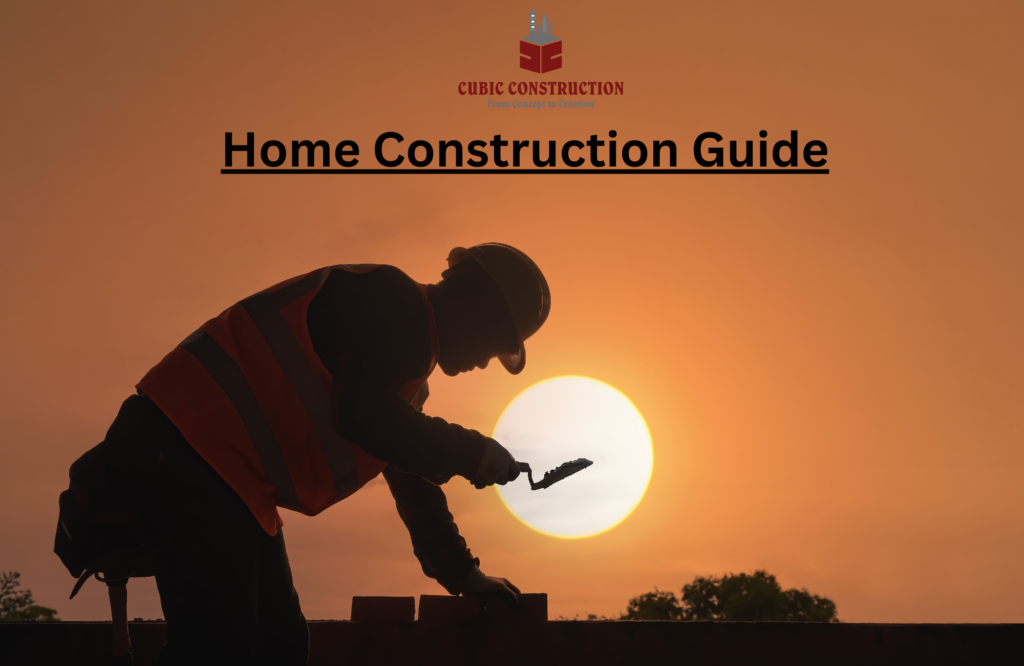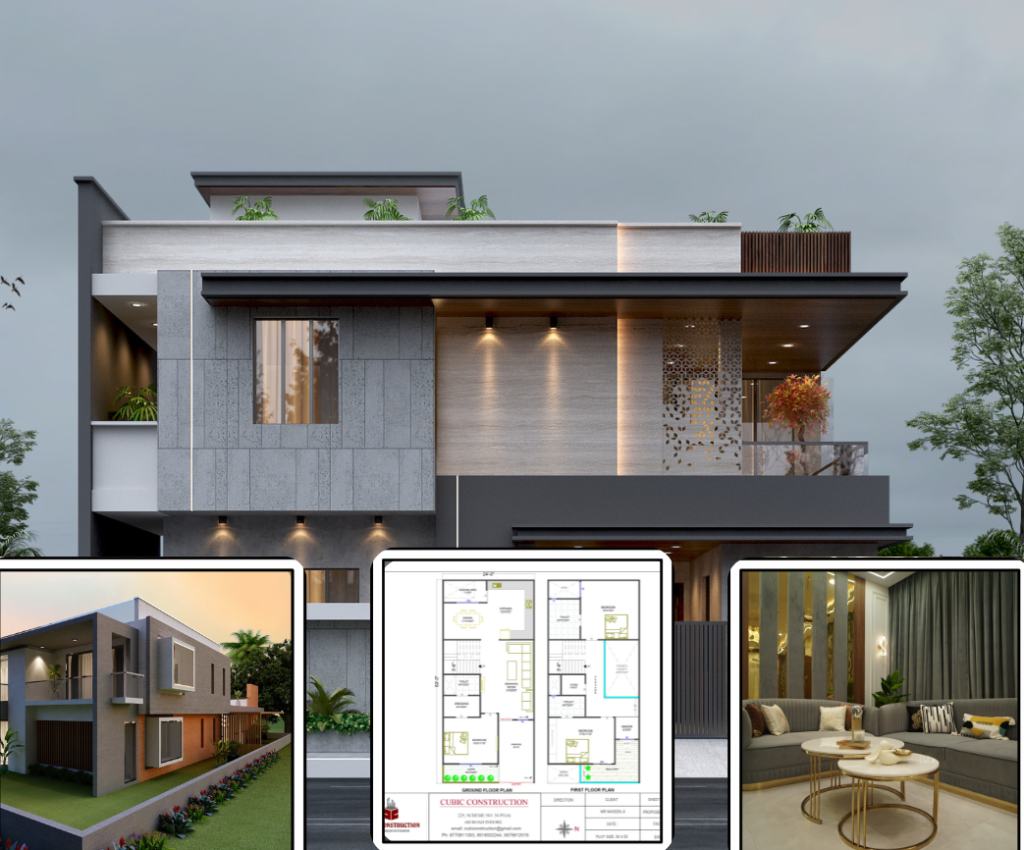Home Construction Guide:
How to Build a House Step by Step at Low Cost

Table of Contents
Building a home is a dream for many, and with careful planning, it’s possible to construct a house that fits your needs and budget. If you’re thinking about “how to build a house step by step,” “how to construct a house,” or “how to build a house at a low cost,” this guide gives you a clear, simple plan to follow. From initial planning to finishing touches, here’s everything you need to know to get started.
Step 1: Planning and Budgeting – The Foundation of Your Home
- Set Your Budget: Begin by establishing a realistic budget. Consider all aspects of construction, from land acquisition and materials to labor costs and permits. Setting a clear budget will keep you on track and help you avoid spending too much.
- Choose the Right Location: Location is key to both the quality of life and the long-term value of your home. Look for an area that fits your lifestyle, whether it’s proximity to work, schools, or amenities. Take into account factors like land cost, accessibility, and neighborhood safety.
- Create a Detailed House Plan: Work with an architect or designer to create a plan that suits your needs. Consider the number of bedrooms, bathrooms, and common areas based on your family’s requirements. A well-thought-out design will help optimize space and reduce construction costs.
Step 2: Acquiring Permits and Hiring Contractors
- Get the Necessary Permits: Construction permits are essential before breaking ground. Contact your local government office to understand the permits required in your area. Failing to get the necessary permissions can result in costly fines and delays.
- Hire Skilled Contractors: For quality results, hire reputable contractors. Check for reviews, references, and experience. Make sure each contractor is insured and licensed. Collaborate with builders who can offer guidance on how to build a house step by step to ensure you’re aware of every phase.
- Schedule Project Phases: Work with your contractor to establish a timeline for each phase of construction. Making a detailed schedule helps prevent delays and lets you see how the work is going, which keeps you on budget.
Step 3: Site Preparation and Foundation
- Clear the Land: Start by clearing the land of trees, rocks, and any other debris. This prepares the ground for a stable foundation. Site preparation may also include leveling and grading the soil to ensure proper drainage.
- Lay the Foundation: The foundation is the base of your home and is important for keeping it strong and steady. Depending on the design and location, you may choose between slab, crawlspace, or basement foundations. Ensure that the foundation is properly waterproofed to prevent future issues.
- Install Utilities Early On: Plumbing, electrical, and sewage lines need to be planned and installed early. Running these utilities before the framing begins can save time and prevent costly modifications later.
Step 4: Framing and Roofing
- Frame the Structure: Framing is the skeleton of your home. At this stage, the walls, floors, and roof frame of the house are built. Quality framing is essential for stability and durability, so make sure your contractor uses sturdy materials.
- Install Roof and Exterior: The roof protects your home from weather elements, so invest in high-quality materials. Shingles, metal, or tiles are common choices, depending on your climate and budget. Once the roof is in place, complete the exterior walls with siding or brick for insulation and aesthetics.
- Windows and Doors: Installing windows and doors comes next. Energy-efficient windows and doors can reduce heating and cooling costs in the long run, so look for quality options within your budget.
Step 5: Plumbing, Electrical, and HVAC Systems
- Plumbing Installation: Experienced plumbers will set up pipes for water supply, drainage, and gas lines. Double-check that each installation is up to code to avoid complications down the road.
- Electrical Systems: Work with a licensed electrician to set up wiring for outlets, lights, and appliances. Consider future needs by adding extra outlets and lighting fixtures where possible.
- Heating, Ventilation, and Air Conditioning (HVAC): HVAC systems that maintain indoor comfort and air quality. Choose a system that fits the weather in your area and the size of your home. Energy-efficient HVAC units may cost more upfront but save money in the long term.
Step 6: Interior Finishing
- Drywall and Painting: Drywall installation gives your home a finished look. After installing drywall, apply a coat of primer and then paint. Lighter colors make rooms appear larger, while darker colors add warmth.
- Flooring Installation: Choose flooring that aligns with your budget and lifestyle. Options like laminate and vinyl are cost-effective, while hardwood and tile add a touch of luxury.
- Fixtures and Appliances: Install sinks, bathtubs, cabinets, and kitchen appliances. Selecting mid-range fixtures can help balance cost and durability, especially in areas with frequent use like kitchens and bathrooms.
Step 7: Landscaping and Final Touches
- Landscaping: Once construction is complete, landscaping enhances the curb appeal of your home. Simple additions like grass, shrubs, and pathways add character without breaking the bank.
- Inspect and Finish: Before moving in, conduct a thorough inspection with your contractor to ensure that everything is in order. Check for any final fixes or small details that need attention.
- Furnish Your New Home: Furnishing brings your home to life. Choose items that match your style and fit your budget. Consider secondhand furniture stores or online marketplaces to save costs.
Tips for Building a House at Low Cost
- Opt for a Simple Design: Complex designs increase costs. A straightforward, efficient layout can save both materials and labor.
- Source Affordable Materials: Look for quality materials that fit within your budget. Local suppliers often offer deals on bulk purchases.
- Do Some Work Yourself: If you’re handy, consider doing smaller tasks like painting or landscaping on your own to reduce labor costs.
- Use Energy-Efficient Solutions: Invest in energy-efficient windows, insulation, and appliances to save on long-term utility bills.
Conclusion
Building a home is an exciting journey, but it takes time, careful planning, and dedication. By following this guide, you’ll learn the basic steps to build a house from beginning to end. Whether you want to keep costs low or just understand the building process, each step in this guide will help turn your dream home into a reality.
Frequently Ask Questions?
Building a home typically requires various permits, including building, electrical, plumbing, and sometimes zoning permits. The requirements vary by location, so check with your local building authority.
Construction timelines vary based on factors like the size and complexity of the home, weather, and availability of materials and labor. On average, building a home can take 6–12 months.
Use energy-efficient materials, proper insulation, and high-efficiency windows and appliances. Consider renewable energy options like solar panels, and consult with your builder on energy-saving designs and technologies.

Latest in Design & Build, Just for You!
Stay Connected! Join Our List for the Latest in Design & Construction News!

